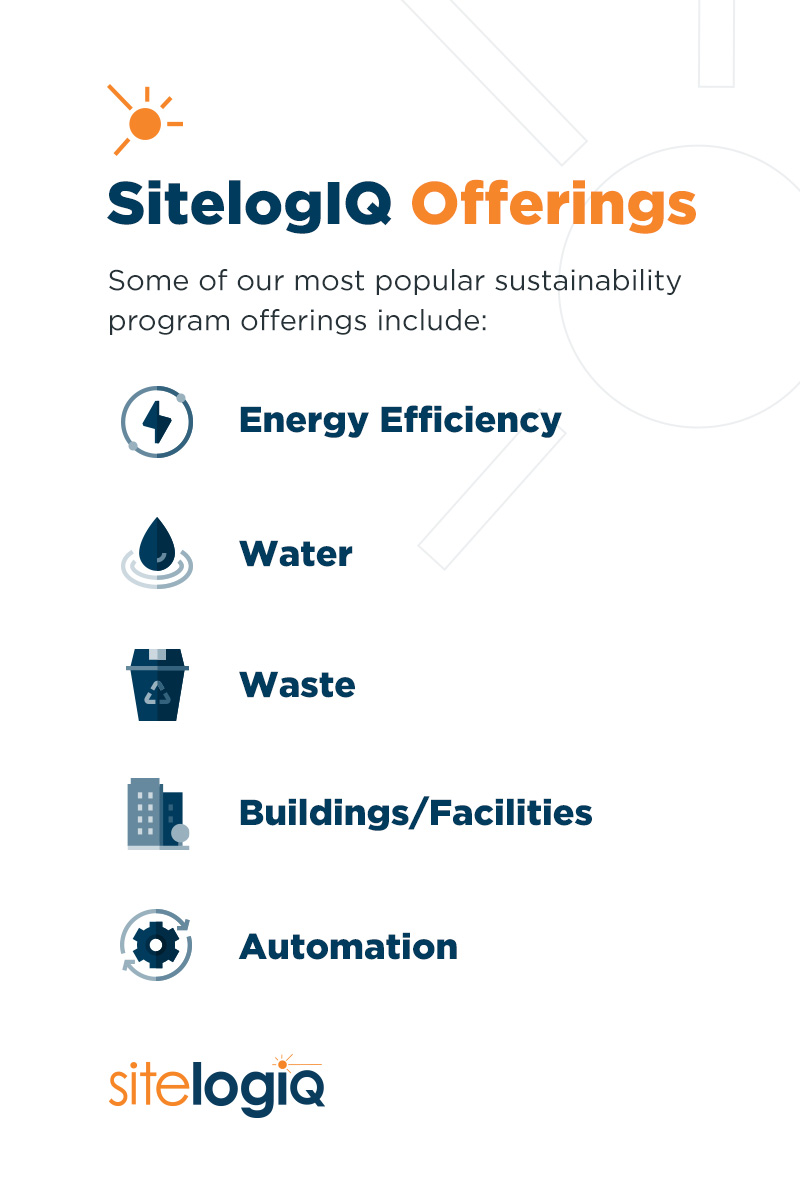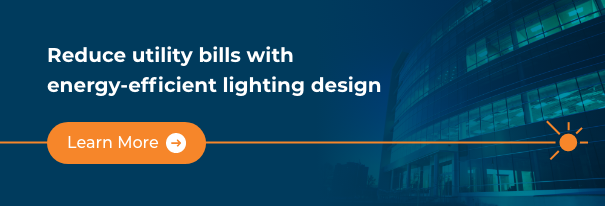
A sustainability program is a strategy that outlines how a business will succeed in the future based on factors such as supply chain operations, energy consumption, building materials, and more. This type of program streamlines the organization’s approach to reaching its operational goals while having a measurable impact on people and the environment.
An efficient sustainability plan focuses on eco-friendly changes and development to promote business growth and realize cost savings. These programs are a fundamental part of any business looking to evolve and grow.
Below, we will discuss what a sustainability program is and how organizations can get the most out of their corporate sustainability programs to meet stakeholder demands, achieve sustainability goals, and stay competitive.
How Sustainability Programs Create Value
Through corporate sustainability programs, businesses realize cost savings, supply chain security, and increased customer loyalty. Additionally, they can mitigate certain risks, enhance overall brand value, allow access to new markets, and help the environment.
While sustainability plan improvement is key for businesses, it is also an important aspect for many company stakeholders and consumers. According to a 2018 Nielson study, 87% of consumers would purchase from a company based on corporate social responsibility (CSR), and 76% said they would boycott a company that didn’t meet their standards. More consumers than ever before care about the environment and continue to opt for businesses, services, and facilities that are environmentally friendly. 66% of Americans are even willing to pay more for a sustainable product.
Companies like Blackstone have been able to successfully integrate sustainability programs into their business models to attract customers and build growth. More than ever, sustainable practices have become integral to consumers and new employees — workers are finding social responsibility to be one of the most important factors in choosing an employer.
These programs are effective from a business standpoint, as they can help lift enterprise value and even a consumer’s overall opinion of a brand.
1. Risk Management
SRM, or sustainability risk management, is a business strategy that helps align an organization’s profit goals with various environmental policies. SRM aims to help a business increase efficiency to grow and sustain while keeping the environment in mind.
An important aspect of SRM adoption is the importance of complying with local, national, and global regulations. An organization that implements SRM policies focuses on the environmental effects of various business processes and how to prioritize efficiency.
An SRM framework allows management to detect emergent concerns that may affect operations, production, and the supply chain. Potential issues include the availability of renewable resources or changes in government regulations.
SRM plays an important role for many businesses because poor environmental practices can negatively impact a company’s reputation, potentially leading to lost clients or business.
Further, better risk management makes a company more appealing to outside investors. Today, investors are seeking out companies that have a strong sustainability plan. Many see them as the future and a smart way to run a business. An organization without one may soon fall out of favor.
2. Business Growth
Several companies implement corporate sustainability programs for business development, growth opportunities, and better market competition. Some companies may upgrade infrastructure to an existing building, making it more sustainable or cost-effective to create financial benefits and gain energy efficiency.
For example, a company may switch to low-flow water toilets to reduce water waste or invest in high-efficiency HVAC motor retrofits to reduce energy consumption.
This improvement in an organization’s efficiency can ensure consumers still receive an effective environment, and the company can realize cost savings and allocate said savings to help the business expand or grow.
3. Return on Investment

Many sustainability initiatives focus on increasing return on investment (ROI) by reducing resource consumption and resource-related costs. For instance, companies can improve their ROI by prioritizing energy efficiency such as overall water consumption in daily operations. Additionally, numerous companies focus on improving ROI by reducing the total amount of operational waste they generate, such as carbon dioxide emissions.
Creating a Sustainability Plan for Your Business
A sustainability program helps your organization grow, mitigates risk, and improves your brand’s reputation. There are several essential aspects to creating a sustainability program, including sustainability drivers, goals and key performance indicators (KPIs), action plans, and implementation plans.
1. Sustainability Drivers
These drivers are unique to each facility because everyone uses energy and resources differently, meaning each organization needs to determine the sustainability drivers that are most applicable to their needs. Still, multiple companies share similar goals, such as reducing waste and minimizing greenhouse gas (GHG) emissions reduction.
Consider the following sustainability drivers:
- Energy consumption
- Water conservation
- Waste
- Building materials
- Products
- Materials packaging
- Supply chain
- Community
- Employees
- Transportation
The factors that may influence sustainability drivers include consumer preferences, employee expectations, investors/owners, resource/supply chain shortages, and brand equity. All should be taken into account when developing a strong sustainability strategy.
2. Goals and Key Performance Indicators
One of the first steps to take when creating a sustainability plan is to assess your baseline. An important base metric is an energy audit, which can help you understand the amount of energy your organization takes in the course of its operations.
An energy audit can also provide recommendations to lower utility bills and expenses and increase overall business efficiency. This audit can also help your business discover different energy opportunities and clean energy alternatives, including renewable energy processes and sources, like wind, solar, hydropower, and geothermal.
3. Action
After identifying your current energy usage and costs with an energy audit, your company can begin to prioritize action.
Prioritize your initiatives based on feasibility, cost, effort, and impact. Additionally, consider materials, policies, processes, and projects related to energy, products, the supply chain, packaging, and transportation. An actionable program can help your organization minimize waste production, helping your bottom line while improving your impact on the environment.
4. Implementation
After prioritizing your initiatives, your business can determine how to implement and roll it out on a wide scale. During the implementation process, education and communication are fundamental aspects to achieve critical goals outlined in your program.
Note that it is essential to educate your employees on the importance of implementing a sustainability program and how it may alter existing practices, procedures, or policies. A company must clearly define and educate employees on the brand’s sustainability mission, vision, and values.
Many companies use a green team or sustainability committee to plan and implement a sustainability initiative and measure its success as it rolls out. As your organization rolls out its sustainability plan and implements new practices, it can revisit its base plan and adjust where needed to be the most efficient as possible.
5. Revisit and Revise Your Program Accordingly
Even if your company has successfully created a sustainability plan and has rolled it out, your work is not done. An effective sustainability strategy continues to develop and evolve, adapting alongside the company to meet ever-changing needs and demands.
When your sustainability program is performing well, minor or easy-to-implement changes may further boost your efforts and improve your company’s ROI. As your organization meets its sustainability goals, you can set more mature goals to further your efforts or identify new areas of growth.
Understand Your Sustainability Drivers
Understanding your company’s sustainability drivers can help your business create an effective sustainability program. Some of the most important sustainability drivers to consider include:
1. Energy
One of the most important sustainability drivers is energy. When creating a sustainability plan, it can be beneficial for your organization to assess its energy usage and identify potential opportunities for improvements.

Some ways to increase energy efficiency include:
- Work with a partner that offers renewable energy options.
- Research applicable clean energy tax incentives or credits that may be available where your business operates.
- Opt for energy-efficient equipment, appliances, and tools.
- Upgrade your company’s building with low-flow faucet aerators, programmable thermostats, and light-emitting diode (LED) lights.
- Consider larger-scale renovations for significant improvements, including solar roofing or heating, ventilation, and air conditioning (HVAC).

2. Water
This is another initiative your company should consider in its sustainability program. Even if your facilities are not located in an area experiencing a drought, you should think about reassessing your water consumption to minimize your brand’s environmental footprint and water-related expenses.
Common water conservation initiatives include:
- Correct faulty plumbing, such as dripping taps or leaking pipes.
- Consider water-efficient toilets, low-flow faucets, and other energy-efficient equipment.
- Minimize landscaping water use and other forms of excess water use.
- Promote healthier water consumption habits among employees.
- Prioritize drought-tolerant landscaping.
3. Waste
Further, waste reduction is beneficial to the environment and your company’s overall expenses. Though it’d be ideal if all companies created zero waste when making products, an organization should first focus on small improvements to minimize waste, looking to zero waste as a long-term goal.
Common ways a business may reduce waste output include:
- Streamline manufacturing processes to minimize waste creation.
- Provide resources to clients on repairing products rather than throwing the product away.
- Go virtual to minimize paper usage by reducing printed direct mail or flyers.
- Store perishable inventory more efficiently to minimize overstocking and spoilage.
- Abide by environmental standards in terms of using raw materials and production materials.
- Take advantage of all recycling options and minimize waste by reusing or recycling materials.
- Instead of disposable marketing, use sustainable promotional items that can be reused and continue marketing your brand.
4. Buildings
There are numerous ways your company’s building can be more eco-friendly, several of them being low-cost. When considering moving or expanding current facilities, it is extremely beneficial to prioritize sustainable architecture. This kind of architecture often utilizes solar panels and recycled materials to minimize energy usage.
A few strategies to improve your building’s energy efficiency include:
- Install solar panels or solar roofing.
- Replace light bulbs with energy-efficient LEDs.
- Improve air quality with live plants.
- Implement a smart control system that optimizes building performance.
- Install motion sensor faucets and other water conservation solutions.
- Use automatic systems and motion detectors to shut off lights when they are not needed.
- Prioritize natural light to minimize energy usage.
SitelogIQ Offerings
Our team of experts at SitelogIQ strives to help businesses increase efficiency, minimize waste, and achieve their energy efficiency goals with a sustainability program. We work with clients across multiple markets, including commercial real estate, manufacturing, industrial, health care, shopping centers, warehousing, and distribution.
Some of our most popular sustainability program offerings include: 1. Energy Efficiency
1. Energy Efficiency
SitelogIQ can help your business achieve a higher level of energy efficiency with innovative energy management solutions. We help businesses focus on efficiency and prioritize facility performance as a part of a sustainability plan. Some of our most common energy efficiency solutions include energy savings, energy project planning, energy storage, energy consulting, and energy management.

2. Water
Though water is essential, businesses should aim to reduce their overall water consumption, minimizing water waste and potentially cutting down costs on water-related systems.
At SitelogIQ, our team can review your projects and provide energy efficiency recommendations to minimize water usage. We also look for ways to save your business money, including grant and rebate evaluation and applications.
3. Waste
Minimizing waste is an important goal for almost any business. Our team can provide recommendations on reducing overall waste output, helping your company save money and be more environmentally friendly.
The first step to minimizing waste output is to conduct a waste audit. A waste audit can help your business understand how much waste and what kind of waste it produces each week. With the results of a waste audit, you can determine what waste reduction initiatives or alternatives your business can implement.
4. Buildings/Facilities
Buildings and facilities can be upgraded or retrofitted to be more environmentally friendly and energy-efficient to develop long-term sustainability and realize numerous cost savings. SitelogIQ provides extensive solutions to improve your company’s building or facility, including solar photovoltaics, co-generation, wind turbines, and more.
5. Automation
Automation can help your business achieve energy efficiency and improve the way you measure and verify your energy usage. One example is lighting automation, which can shut off lights in a room if there is no motion detected, improving the functionality and efficiency of your building.
SitelogIQ Energy Services and Facility Solutions
SitelogIQ is a full-service facility planning, design, and management company dedicated to creating healthy, efficient work environments and multi-unit living spaces.
Our team provides deep and wide-ranging knowledge and experience in all aspects of facility planning, design, and management, including mechanical and plumbing systems, central energy plants and energy efficiency, lighting systems, and building controls. We make buildings better so that people in our local communities can thrive in areas where they live, learn, heal, work, and shop.
We are dedicated to delivering comprehensive facility solutions that support the resiliency, future-proofing, energy-saving, operating efficiency, and sustainability goals of our clients.
Contact SitelogIQ Today to Get Started

Building a sustainability plan can be challenging. With the right approach, we can help make the process go smoothly and adapt your business with the planet in mind. If you’re ready to discuss more, contact us to get started.


